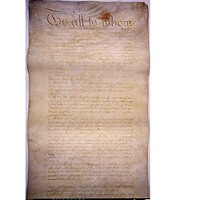The Articles of Confederation, adopted between 1777 and 1781, served as the first constitution of the United States, establishing the functions of the national government after the declaration of independence from Great Britain. This document created a weak central government, primarily aimed at preventing individual states from conducting their own foreign diplomacy, a lesson learned from earlier attempts at colonial unity.
The creation of the Articles was influenced by a complex interplay of factors, most notably the colonists’ fear of centralized power. The failure of the earlier Albany Plan highlighted the states’ reluctance to cede authority to a central institution. However, as the American Revolution progressed, the need for a unified front became increasingly apparent.
Several plans for a more formal union emerged during this period. Benjamin Franklin proposed “Articles of Confederation and Perpetual Union,” but these were tabled due to significant opposition from delegates wary of centralized control. The main sticking point was finding a balance between national coordination and state sovereignty.
Following the Declaration of Independence, the Continental Congress realized the urgent need to establish a national government. Debates centered on representation, voting structures (proportional or state-by-state), and state claims to western lands. These disagreements significantly delayed the finalization of the Articles until October 1777, when the British capture of Philadelphia added a sense of urgency. Delegates finally agreed to state-by-state voting and proportional state tax burdens based on land values, although the issue of western land claims remained unresolved.
alt: Articles of Confederation document displaying historical significance and ratification process
Ratification proved to be a challenging process. While Virginia was the first state to ratify on December 16, 1777, unanimous approval from all states was required. Maryland, Delaware, and New Jersey initially refused, primarily due to concerns about western land claims held by other states. Smaller states wanted assurance that larger states would relinquish these claims.
The lack of unanimous support threatened the stability of the nascent nation. Some states considered forming a national government without Maryland, but figures like Congressman Thomas Burke of North Carolina argued against this, emphasizing the need for unanimous approval to prevent future foreign intervention and manipulation.
The turning point came when British forces began raiding Maryland communities in the Chesapeake Bay in 1780. Facing increased vulnerability, the state government appealed to the French minister Anne-César De la Luzerne for naval assistance. Luzerne, in turn, urged Maryland to ratify the Articles of Confederation. This, coupled with Virginia’s agreement to relinquish its western land claims, finally led Maryland to ratify the Articles on March 1, 1781.
alt: Anne-César De la Luzerne portrait emphasizing French diplomacy and influence on American Confederation
Despite establishing a national government with a Department of Foreign Affairs, the Articles of Confederation had significant limitations. The central government struggled to enforce its authority, particularly in areas such as foreign policy and interstate commerce. For instance, Georgia pursued its own independent policy regarding Spanish Florida, and the Confederation government couldn’t prevent the landing of convicts exported by the British.
Furthermore, the Articles lacked the power to enforce provisions of the 1783 Treaty of Paris, leading to continued British occupation of forts in the Great Lakes region. The ineffectual response to Shays’ Rebellion in Massachusetts further highlighted the weaknesses of the Confederation government.
Ultimately, the experience under the Articles of Confederation demonstrated the need for a stronger, more centralized government. This realization led to the Constitutional Convention, where the current Constitution of the United States was formulated, addressing the shortcomings of its predecessor. The guiding principle throughout the development of the Articles of Confederation was the desire to balance the need for national unity with the preservation of state sovereignty, a balance that ultimately proved difficult to achieve.

